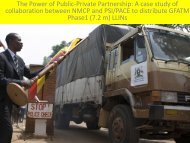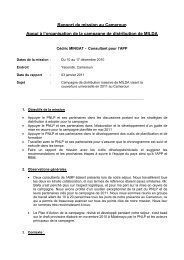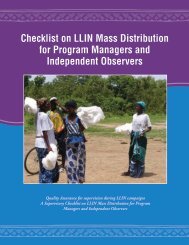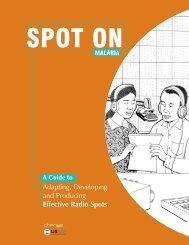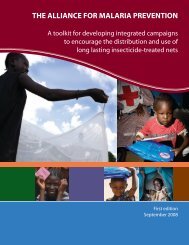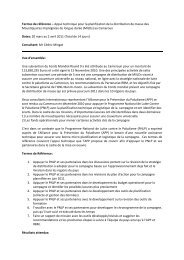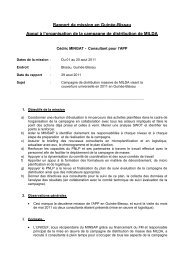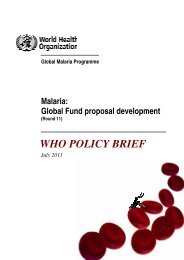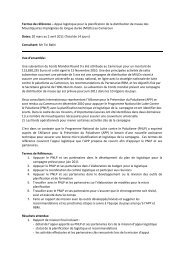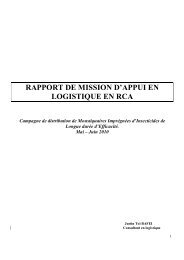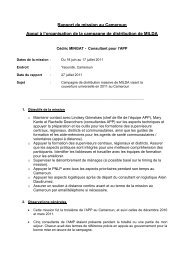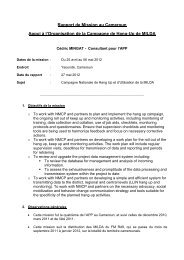Anambra State Post-Campaign Net Tracking Survey
Anambra State Post-Campaign Net Tracking Survey
Anambra State Post-Campaign Net Tracking Survey
You also want an ePaper? Increase the reach of your titles
YUMPU automatically turns print PDFs into web optimized ePapers that Google loves.
<strong>Anambra</strong> LLIN campaign evaluation<br />
<strong>Anambra</strong> <strong>State</strong> lies within the rain forest eco-geographical zone. Accordingly, overall rainfall is<br />
high varying between 1,690 mm per annum in the North and 2,148 mm in the Southern parts of<br />
the <strong>State</strong>. The rainy season is somewhat bimodal with a first peak April to July and a second<br />
peak in September/October but no real “dry” season in-between (Figure 2).<br />
Figure 2: Rainfall intensity and pattern in <strong>Anambra</strong> <strong>State</strong>.<br />
LLIN campaign<br />
measured at longitude of 7.25 degree East from North to South. The box indicates the<br />
time period of the survey.<br />
The LLIN distribution campaign in <strong>Anambra</strong> <strong>State</strong> was supported by DFID though the SuNMaP<br />
project as well as the WB Malaria Booster Project and implemented by a Task Force that<br />
included the <strong>State</strong> Malaria Control program, the <strong>State</strong> Support Team (SST) for LLIN distributions,<br />
representatives of <strong>State</strong> Government and donors as well as multi- and bilateral agencies. The<br />
Task Force had three sub-committees, namely technical, logistics and demand creation.<br />
After a period of staff training and mobilization teams went out to the communities to register<br />
each household and provide a net card that could be redeemed for two LLIN at the distribution<br />
point in the following days. The objective was to distribute two LLIN for every household.<br />
Sampling<br />
This was a cross-sectional household interview survey with a stratified two stage cluster<br />
sampling design. The strata were areas with expected high and low pre-campaign net coverage<br />
respectively shown in Figure 3 below. Each stratum was considered as survey domain for which<br />
30 clusters were used. No urban/rural stratification was done but clusters were defined as urban<br />
or rural based on their categorization in the 2006 census.<br />
13


